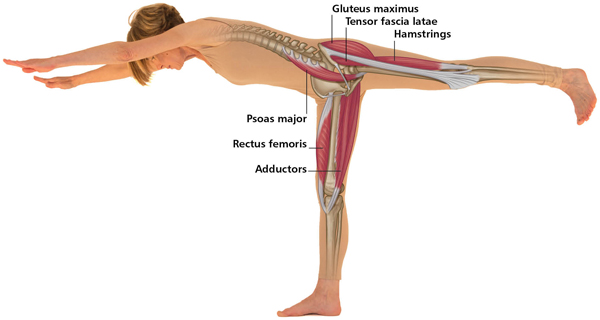8
Muscles of the Hip
Hip Joint
The iliofemoral joint, better known as the “hip joint,” is the largest ball-and-socket joint in the body and is extremely active in yoga in different ways. It is dominant in standing asanas, whether on one leg or two, and also in backbends as the hip extends along with the spine. The joint is always in a flexed position in forward bends. In sitting postures, such as Lotus, the hips are flexed and outwardly rotated, although the muscles are not in a strongly contracted state. Prone positions, such as Cobra and Bow Pose, stretch the hip flexors and strengthen the extensors, while supine postures can vary greatly. Arm balances also incorporate the hip joint.
Structure
The “ilio” part of this joint’s name refers to the iliac bone, a portion of the pelvis which houses the acetabulum of the pelvis (the socket). This cavity articulates with the head of the femur (the ball) to form the joint. In architectural terms, the pelvis is the keystone and the two femurs are the supporting members of an arch-like structure. This makes the hip joint stable and balanced, with excellent structural integrity.
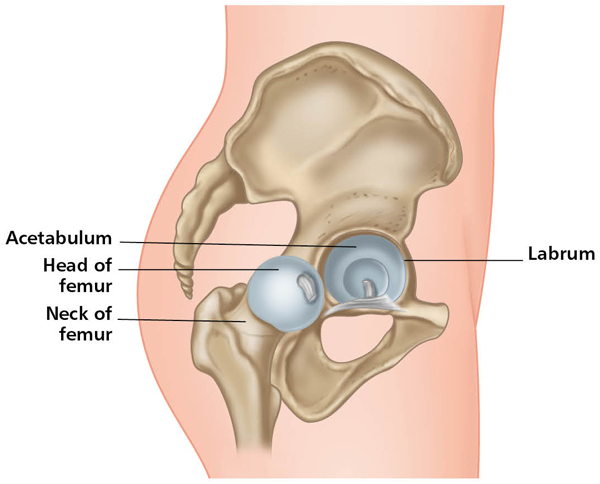
Connective Tissue
There are three large ligaments that should be noted. The iliofemoral, or Y ligament, supports the joint anteriorly and limits hip extension and outward rotation. One should consider this while stretching, as an overstretched ligament does not necessarily return to its original length and can make the joint unstable. This is true at any joint and happens often in yoga as students try to go beyond the limits of their body. The ischiofemoral ligament originates behind the rim of the socket and crosses the joint to the femur, while the pubofemoral ligament extends from the pubis to the fibers of the Y ligament. All work to stabilize and hold the joint together, with other smaller ligaments located around the hip, lumbar, and sacral joints. The labrum of the acetabulum is a ring of tissue around the rim of the socket that cushions and stabilizes the joint. It is mentioned here because it is possible to aggravate and even tear this tissue, causing pain around the joint. Structural problems, acute injury, or misuse can lead to this condition, and certain yoga postures can be used to help it.
Actions
Muscles on the front of the thigh flex the hip, the outside (lateral) thigh muscles abduct, the back thigh muscles extend, and the inside (medial) thigh muscles adduct. Most of these muscles also perform inward or outward rotation, the final two actions of the hip. There is a group of six deeper hip rotators that fine-tune outward rotary movements and stabilize the sacral area. Another important component of the lateral thigh is the iliotibial band (ITB), which supports knee stabilization; it comprises the gluteus maximus, tensor fasciae latae, and fascia extending from the pelvis past the knee.
Muscles
The muscles that work the hip pass from the pelvis to the femur, some even going past the knee joint, making these biarticulate. All the larger muscles actually shape the thigh, and most perform more than one action at the hip.
Yoga is a perfect example of balancing strengthening and stretching at the hip joint in all three planes. In Warrior poses the front-leg hip flexors are strengthening as the back-leg flexors are lengthening. In Tree Pose the standing leg is strengthening as the free leg is both strengthening and stretching, depending on the muscle. All of this is described in the muscle and asana illustrations that follow.
In this chapter the muscle information is grouped as flexors, extensors, etc., and an asana will follow each group: one that strengthens, and one that stretches. Of course, there are many asanas that can be included in these areas; some are noted under “Asanas that heavily use this muscle”.
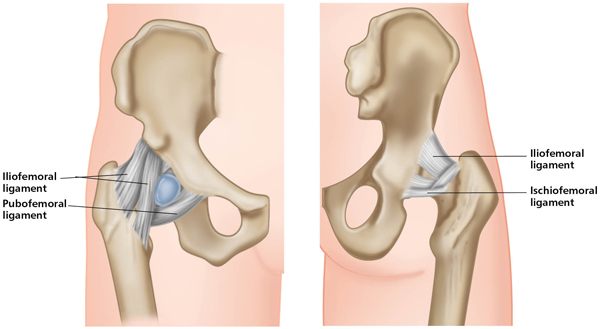
Main Hip Flexor
RECTUS FEMORIS
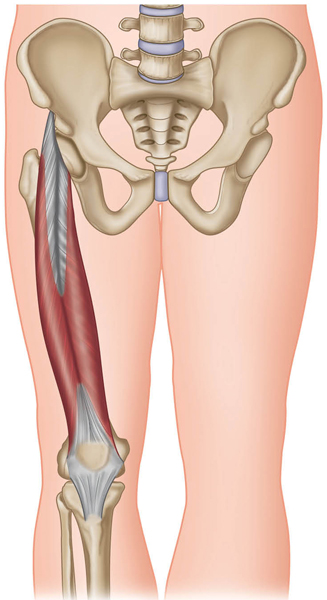
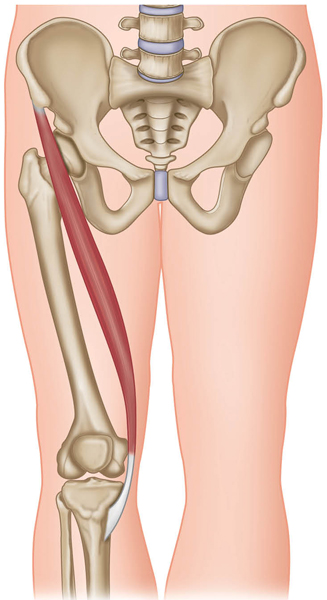
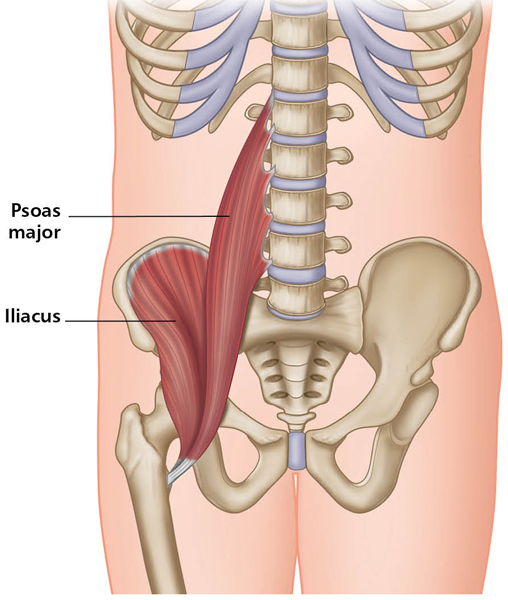
Utthita Hasta Padangusthasana (Extended Hand-to-Big-Toe Balance) Level II
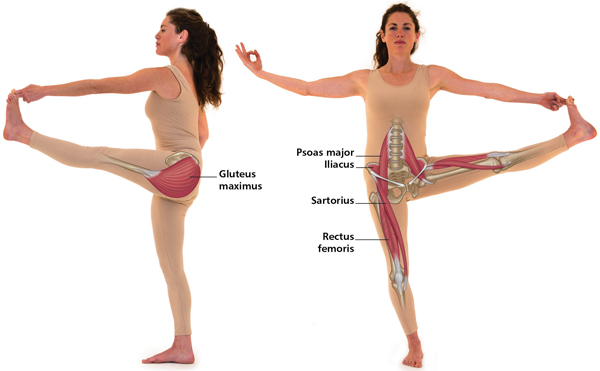
Setu Bandhasana (Half Bridge Pose) Level I (Hip Flexor Stretch)
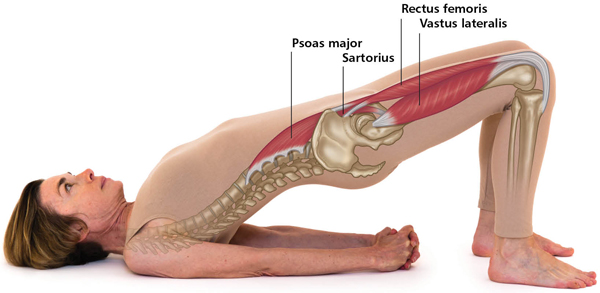
Main Hip Abductor
TENSOR FASCIAE LATAE
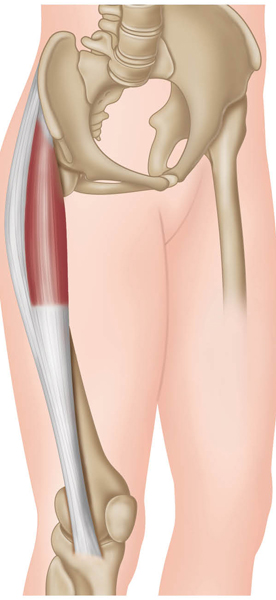
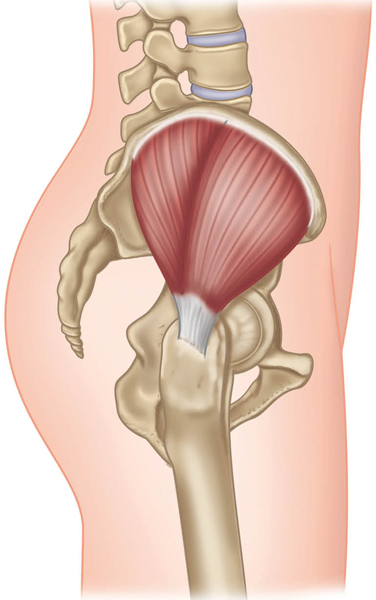
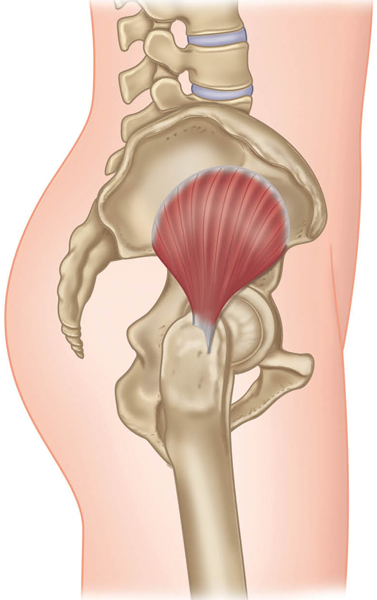
Parighasana (Crossbar or Gate Pose) Level I (Hip Abductor Strength and Stretch)

Supta Matsyendrasana (Reclined or Supine Spinal Twist) Level I (ITB Stretch)
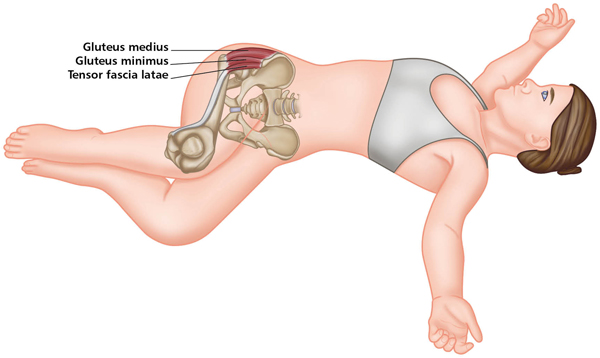
Main Hip Extensor
GLUTEUS MAXIMUS
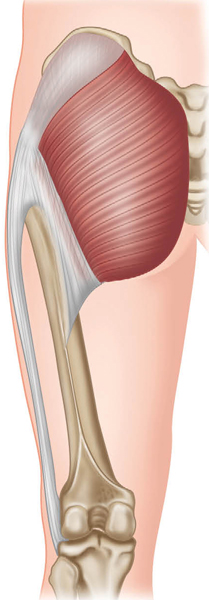
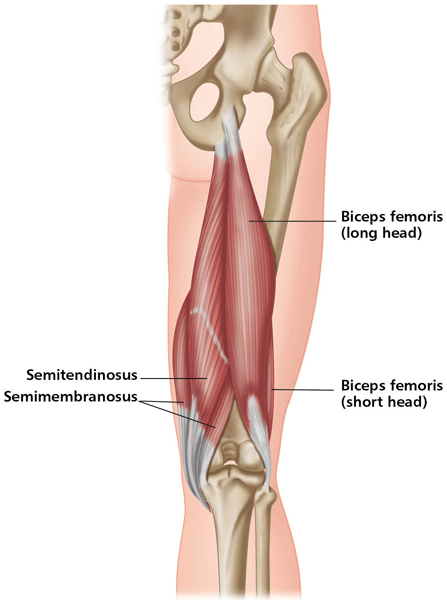
Dhanurasana (Bow Pose) Level I, II
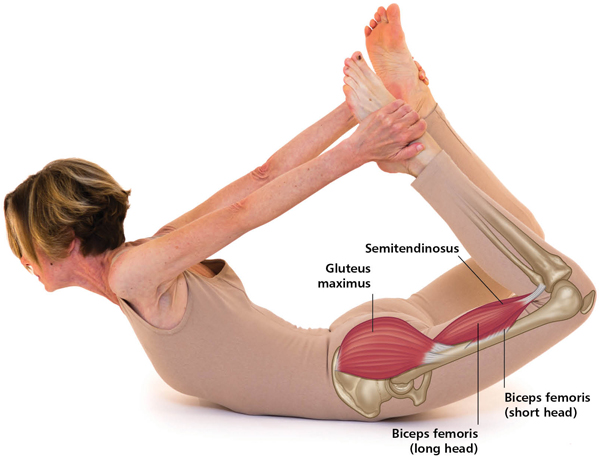
Balasana (Child’s Pose) Level I (Hip Extensor Stretch)

Main Hip Adductor
ADDUCTORS MAGNUS, BREVIS, LONGUS
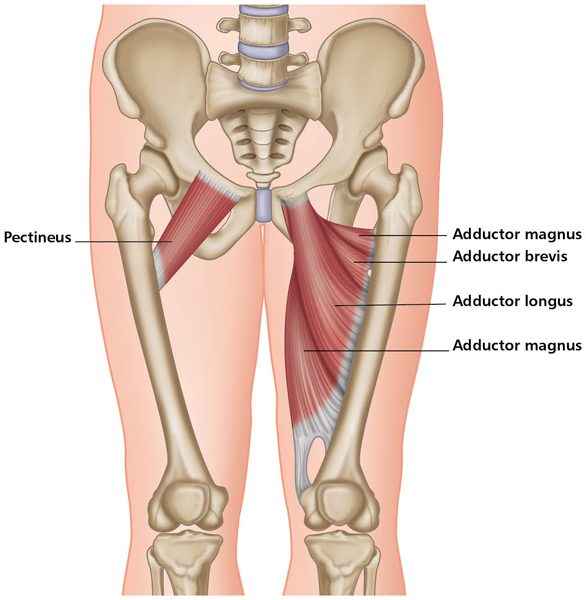
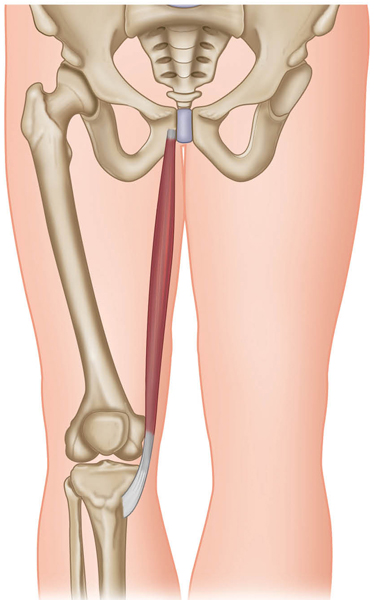
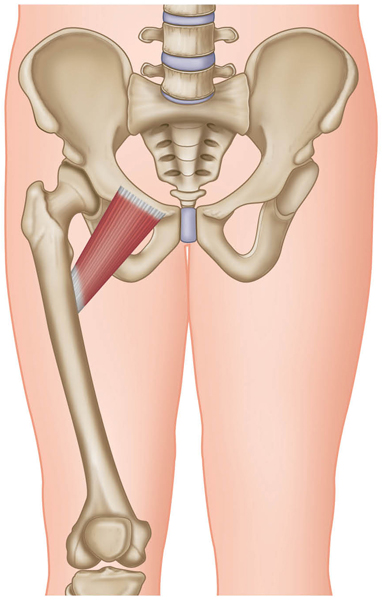
Parsvottanasana (Pyramid Pose) Level I, II
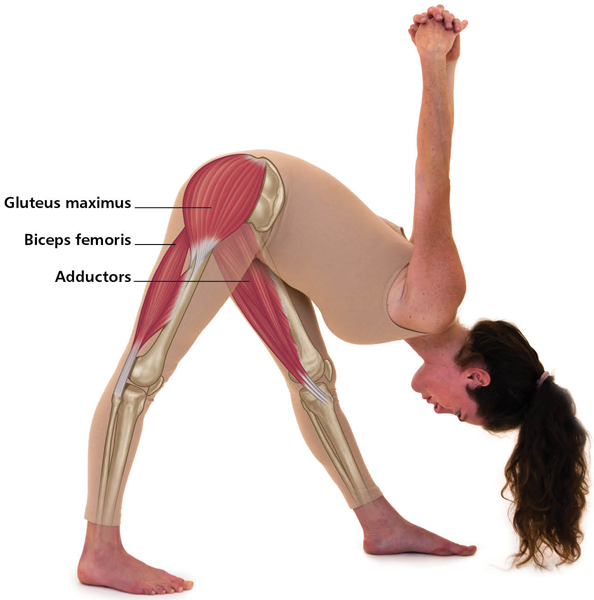
Baddha Konasana (Bound Angle Pose) Level I (Hip Adductor Stretch)
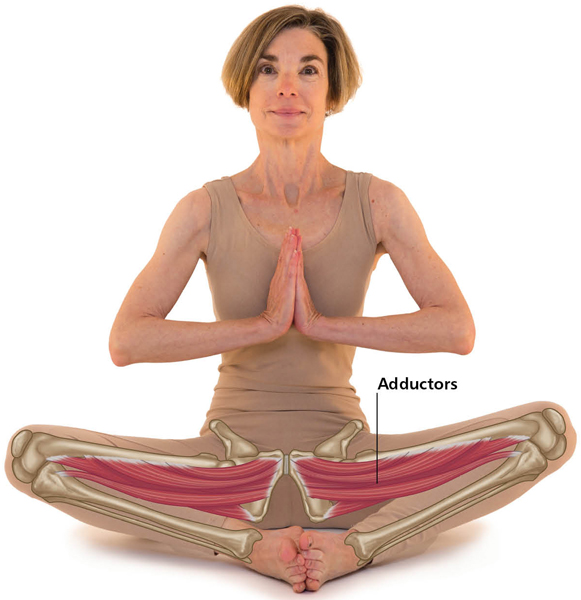
Supta Konasana (Reclined Straddle Pose) to Ananda Balasana (Happy Baby) Level I
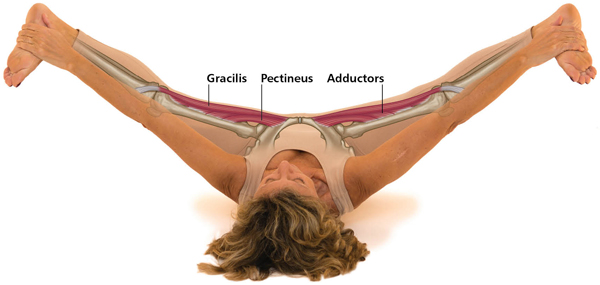
Deep Hip Outward Rotator
PIRIFORMIS
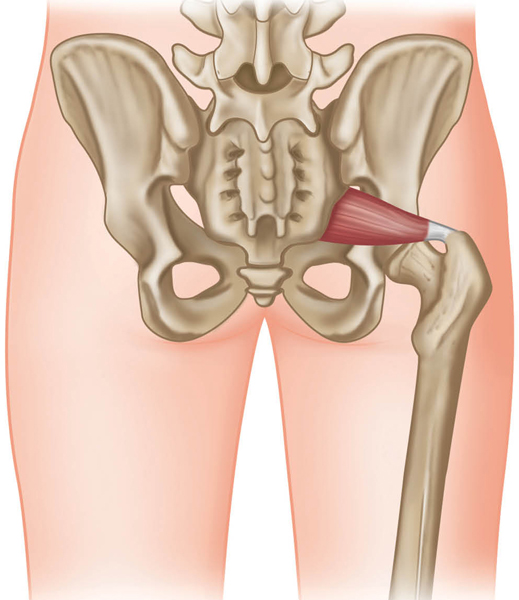
OBTURATORS, GEMELLI, QUADRATUS FEMORIS
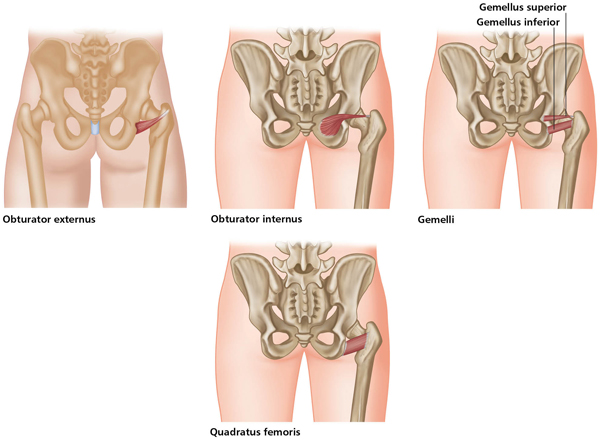
Note: Hip inward rotation positions will stretch these muscles the most, but the placement of the front leg closer to hip adduction (across the midline) in Pigeon can help lengthen the piriformis, which may release pressure on the sciatic nerve.
Secondary muscles that outwardly rotate the hip are sartorius, gluteus maximus, biceps femoris, and the adductor group.
Ardha Chandrasana (Half Moon Pose) Level I, II
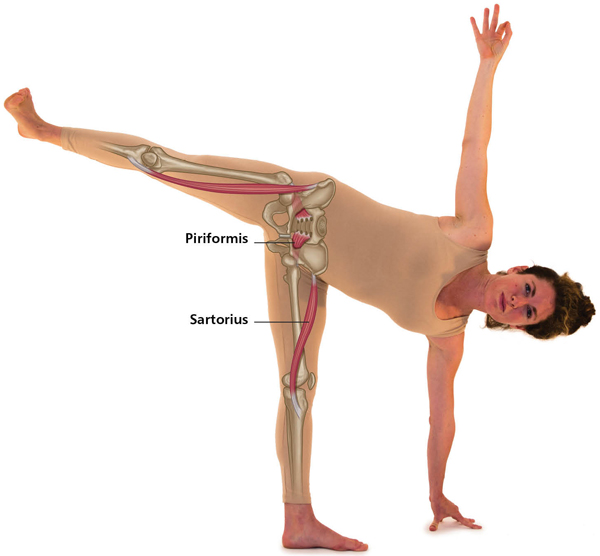
Eka Pada Rajakapotasana (Pigeon Pose) Level I, II, III
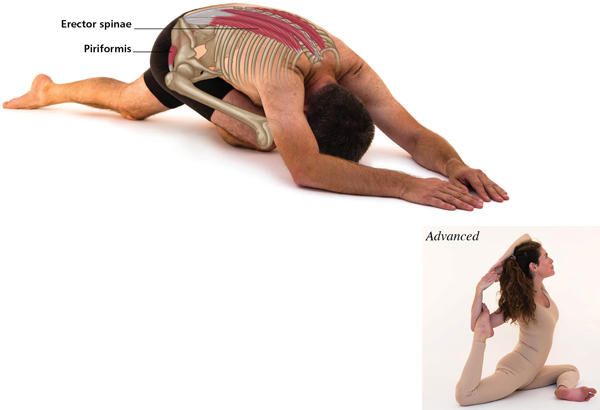
Supta Virasana (Reclined Hero Pose) Level II (Hip Inward Rotation)
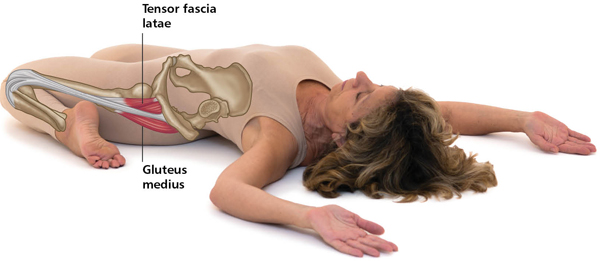
Hip Inward Rotators
The main muscles are the gluteus medius (anterior fibers), gluteus minimus, tensor fasciae latae, semitendinosus, semimembranosus, pectineus, and gracilis. These muscles have other primary actions at the hip joint and have already been discussed earlier in this chapter.
Asanas that heavily use these muscles in inward (medial) rotation
Strengthening: Supta Virasana (Reclined Hero Pose). Prasarita Padottanasana.
Stretching: Utkata Konasana (Goddess Pose). Padmasana. Baddha Konasana.
Utkata Konasana (Goddess Pose or Fierce Angle Pose) Level I
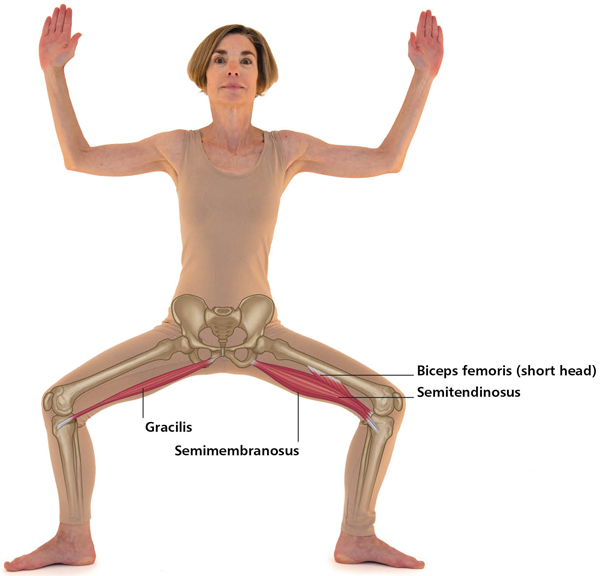
Virabhadrasana III (Warrior III) Level II (Summary Pose)
